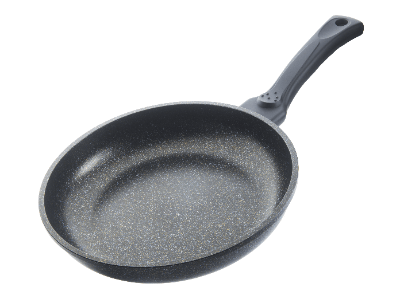What Is a PTFE Product?

PTFE products (polytetrafluoroethylene) are resins where fluorine atoms replace hydrogen atoms in polyethylene. Their strong carbon-fluorine bonds provide high resistance to heat and chemicals. These properties make PTFE products ideal for tubes and gaskets in extreme conditions, such as high temperatures and chemical exposure.
PTFE’s non-adhesive and abrasion-resistant qualities also make it a popular coating for cookware. However, compared to other fluoropolymers, PTFE has lower processability due to its high viscosity and low thermal fluidity when melted.
Uses of PTFE Products
PTFE products exhibit abrasion resistance, non-adhesiveness, chemical resistance, and heat resistance. They are commonly used as coatings in cookware, typically referred to as “fluorine-coated.” Additionally, PTFE finds industrial applications in hoses, gaskets, tubes, and insulating materials, suitable for high-temperature and corrosive environments. However, PTFE’s high melt viscosity limits its molding capabilities, making it less processable than other fluoropolymers.
Structure of PTFE Products and Resin Manufacturing Methods
PTFE’s chemical structure is polyethylene with fluorine replacing all hydrogen atoms. This structure contributes to its heat and chemical resistance. In contrast, PTFE’s moldability and processability are inferior to other fluoropolymers. For example, PFA becomes fluid when heated, allowing for various shaping methods like injection molding. PTFE, however, remains highly viscous above its melting point and lacks fluidity. PTFE products are typically formed by compression molding the powder and sintering it above the melting point.
Difference Between PTFE and Teflon
“Teflon” is a term often confused with PTFE. Teflon is a registered trademark of DuPont, initially used for commercializing PTFE. Today, teflon refers to a range of fluoropolymers, not just PTFE, including FEP, PFA, and modified types. These fluoropolymers differ in adhesive strength, insulation properties, and chemical resistance, necessitating careful selection based on the application.
Heat Resistance and Safety of PTFE Products
PTFE is generally safe for oral ingestion, and no health effects are reported even if flakes from cookware coatings are consumed. However, PTFE can decompose into toxic compounds at temperatures above 350°C (350°F). Instances of respiratory problems have been reported due to accidental overheating, such as leaving a pot on a fire unattended or burning PTFE in a laboratory. Although PTFE is harmless under normal conditions, caution is necessary to avoid harmful decomposition products from prolonged direct exposure to fire or extreme heat.